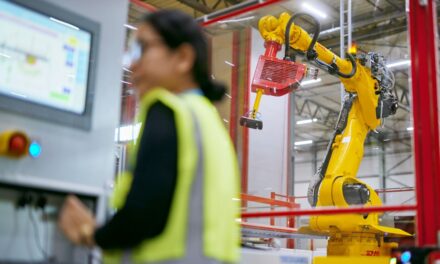
The rise of digital twins in logistics

DHL has released a Trend Report on “Digital Twins in Logistics” at the inaugural Internet of Things (IoT) Day, at DHL’s Innovation Centre in Germany.
A digital twin is a unique, virtual representation of a physical thing that monitors and simulates both the physical state and behaviour of the thing. The digital copy is continually connected to the physical object(s) and updates itself to reflect real-world changes. Applied to products, machines and even entire business ecosystems, digital twins can reveal insights from the past, optimise the present and even predict future performance.
The report explains the concept and rise of digital twins as well as how it creates value. The technology, which involves using digital models to better understand and manage physical assets is already well established in some industries and has the potential to significantly change logistics operations.
“The market for digital twins is expected to grow more than 38 % each year, passing the $26 billion mark by 2025,” explains Matthias Heutger, Senior Vice President, Global Head of Innovation & Commercial Development at DHL. “Digital twins offer unparalleled capabilities to track, monitor, and diagnose assets. They will change traditional supply chains, with a range of options to facilitate data-driven decision making and collaboration, streamlined business processes, and new business models. We are keen to work with our customers and partners to jointly explore applications in our industry.”
Logistics applications of digital twins
Markus Kückelhaus, Vice President, Innovation and Trend Research, DHL Customer Solutions & Innovation, says: “Powered by IoT, cloud computing, artificial intelligence and advanced visualisation tools, digital twins are becoming a more attractive and accessible option for companies. However, bringing these and other relevant technologies together into a full digital twin implementation is a complex and challenging task. Close collaboration between all partners along the value chain is therefore essential to fully capture the potential.”
In the Trend Report, DHL examines the challenges to implementation, such as cyber security concerns, but stresses that business cases for implementing digital things are becoming more compelling. As related technologies get to be more dependable and affordable, businesses in a number of industries will find digital twins invaluable in managing complex systems of assets in real time and increasing efficiency in their processes. The report concludes by considering the investments and changes necessary for the successful implementation of digital twins in logistics.













